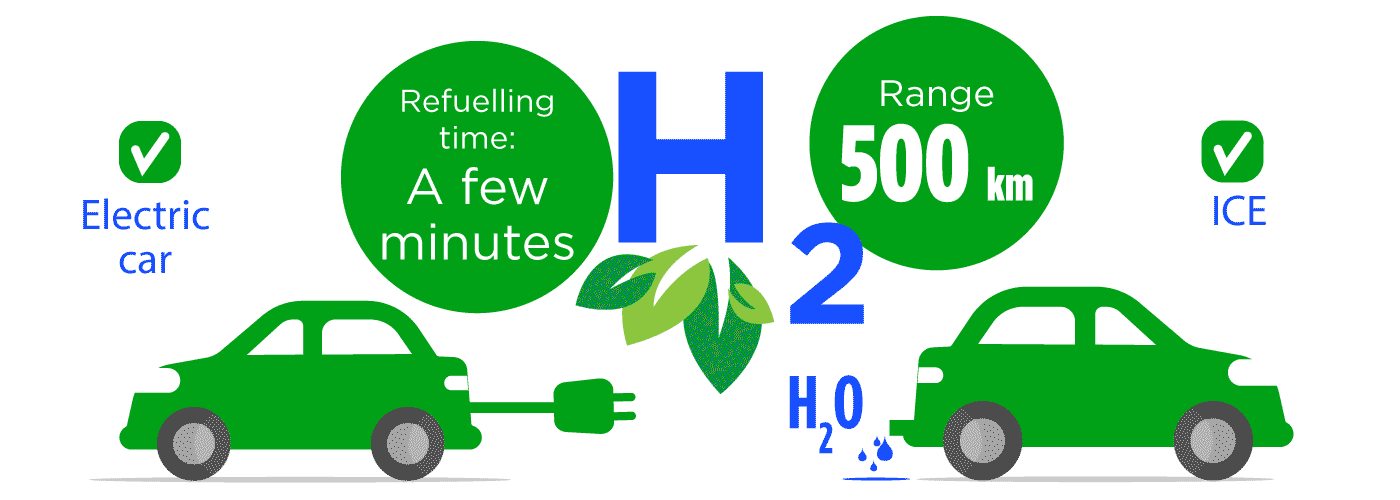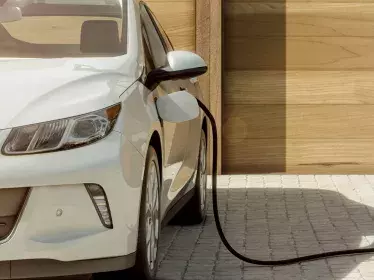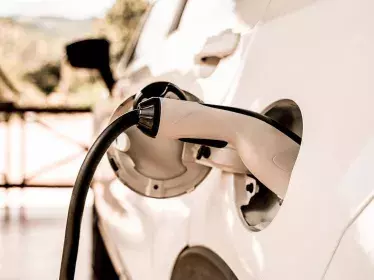Cars have always been powered by internal combustion engines. Today, these are sometimes assisted or even completely replaced by electric motors. You are probably familiar with battery-powered electric cars. But did you know that there is another type of electric vehicle? FCEVs that run using a hydrogen fuel cell! What's more, hydrogen can also power a combustion engine.
Fuel cell
Hydrogen atoms combine with oxygen in the fuel cell to generate electricity. And it's this that makes the wheels turn. These cars are therefore electric but do not need to carry large batteries. The icing on the cake is that they only emit water!
Another advantage of these vehicles is the refuelling time: there is no need to wait for the battery to charge. Just like a petrol-powered car, all you need to do is fill up! Just connect the hose and, only a few minutes later, you are ready to drive 500/600km with the pressurised hydrogen stored in the car (5kg to 6kg).
ICE
It is also possible to fill up a car that uses hydrogen to power an internal combustion engine. This then burns O2 oxygen and H2 hydrogen. Here again, the car only emits water. However, this type of engine needs large diameter inlet ducts and valves to compensate for the low density of the hydrogen-air mixture.

A real rainbow
How cool is hydrogen? The problem is that H2 hydrogen does not exist in its natural state. The hydrogen atom loves being combined with other atoms and molecules (e.g., H2O water). It must therefore be manufactured (or rather extracted). There are different methods and it’s a bit like a rainbow. In fact, each method has its own colour according to its environmental impact: grey, blue, green, yellow, pink, etc. But some are more important to consider than others. First off, there is the grey that is produced by modifying natural gas. Unfortunately, this technique releases CO2. That is, unless the CO2 is stored or reused. In this case, the hydrogen is then blue.
Another process is electrolysis. Electricity is passed through water to separate hydrogen from oxygen. The source of this electricity determines its colour:
- green: made using renewable energy
- pink: 100% nuclear electricity
- yellow: produced using solar power! The significant added value of this yellow hydrogen is that it could be created directly at the pump. So there would be no need to transport it!
Another drawback of hydrogen is its efficiency. This is because electricity is used to produce it before it is converted back into electricity. Unfortunately, energy is lost during these conversions.

Increasingly available
Belgium is pretty fortunate in terms of hydrogen stations. By the end of 2022, the country will have a dozen or so places to refuel: in Zaventem, Hal, Haasrode, Erpe-Mere, Wilrijk, Herve and Ollignies.
Currently, two hydrogen cars are sold on the Belgian market: the Hyundai Nexo and the Toyota Mirai. At the end of 2021, the Stellantis Group marketed Citroën, Opel and Peugeot fuel cell vans with a rechargeable battery. Hybrid hydrogen vehicles! As for Toyota, they are seriously considering hydrogen as fuel for internal combustion engines. Other brands are gradually embarking on the fuel cell or hydrogen engine adventure as well.






